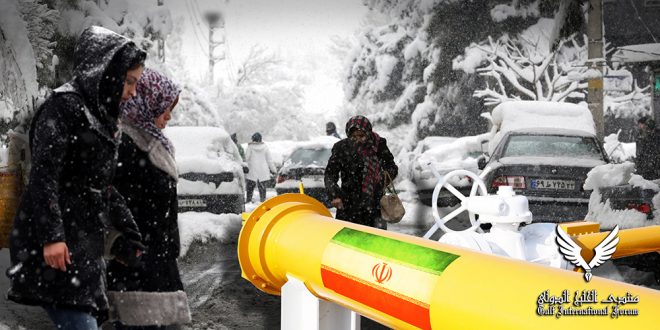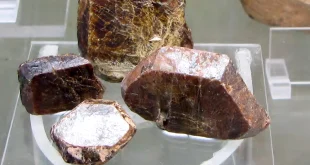The Iranian government has vowed to increase its gas output and international exports, but cannot produce enough to keep the lights on at home.
The Iranian government is currently embroiled in the most serious threat to its rule since the end of the Iran-Iraq War in 1988. The protests surrounding Mahsa Amini’s death have spread across Iran. Millions of demonstrators—overwhelmingly women, students, and young people frustrated by a lack of economic opportunity and angered by the clerical government’s stifling restrictions on personal behavior—have taken to the streets, demanding change. Viewing the protests as an existential threat, the Iranian government has attempted to crush them by any means necessary and restore the regime’s control over the country. The leadership has attempted to address widespread economic grievances by increasing oil output. Tehran has also taken steps to renew the Joint Comprehensive Plan of Action (JCPOA), which would bring about the removal of Western sanctions, enable economic growth, and assuage the concerns of protestors.
Iran faces opposition to both of these initiatives. As of October, the JCPOA appears dead in the water, as U.S. officials have suggested that they will not move forward with negotiations during the protests. At the same time, Iran’s domestic unrest has crippled the country’s efforts to ramp up oil and natural gas production.
A Growing Shortfall
Iran holds the world’s second-largest natural gas reserves and is the fourth-largest producer of natural gas. Iranian officials have often long noted the potential windfall that could come from increased international gas exports. However, the country’s natural gas sector faces many challenges. An international sanctions regime has prevented the Ministry of Oil from producing enough gas to reliably maintain Iran’s own power grid, let alone export at scale. According to Ahmad Zamani, the director of production, coordination, and supervision at the National Iranian Gas Company, natural gas production in Iran has increased by four billion cubic meters in the first half of 2022 at a pace of roughly 840 to 850 million cubic meters per day. On average, about 250 billion cubic meters of gas is consumed annually in Iran, or roughly 685 million cubic meters per day. Although on paper this number appears sufficient to meet Iran’s energy needs, the country has experienced regular power shortages during the winter (and less often during the summertime), as Iran’s natural gas production is fairly constant but demand skyrockets in the winter months. In 2021, Iran exported 17 billion cubic meters of natural gas. It transferred an average of 20 million cubic meters to Iraq per day, a number that has since increased to roughly 35 million to better meet the country’s growing energy needs. Turkey, Iran’s second major export market, took in around 9 million cubic meters per day in 2021.
According to a BP report, Iran experienced a 3.1 percent growth in natural gas production in 2021. It produced 256.7 billion cubic meters, or 6.4% of the world’s natural gas production, in 2021. This figure makes the Islamic Republic the fourth largest gas producer in the world. At the same time, domestic consumption of natural gas in Iran increased by about 3.2% in 2021, effectively negating greater production volumes. Iran always experienced a gas deficit in winter due to a significant increase in household consumption, but last year this deficit started during the fall months, leading the Oil Ministry to cut off or significantly reduce gas delivery to the industrial sector and power plants.
In the weeks ahead of predicted power cuts, Iran regularly begins to burn alternatives to natural gas, usually diesel and heavy fuel oil, in order to ease supply issues. Last year, this period began in autumn, but this year it started in summer. Even so, the country posted a deficit of 250 million cubic meters of gas per day during Winter 2021-22, according to Oil Minister Javad Owji—a greater deficit than the entire gas consumption of Turkey. On Tuesday, October 19, the Iranian Parliament’s Energy Commission announced in a report that due to continued neglect of the gas shortage in the country, there was a serious disruption to household and business heating systems, resulting in a 70% reduction in the country’s electricity production, the suspension of basic industries, and the closure of some public services, such as bakeries and water distribution. Combined, these factors will almost certainly add fuel to anti-government demonstrations. Due to a drop in gas pressure in the South Pars field and continued increases in consumption, Iran’s supply of gas is under threat.
Owji has emphasized that Iran took all necessary measures in the fall and winter of 2021 to ensure that oil supplies would be reliable throughout this year’s winter. However, due to a lack of investment in petroleum refineries and the failure to construct new refineries in recent years, the country’s refinery capacity is lower than its national target in the Sixth Development Plan. More than 70% of Iran’s energy is provided by natural gas—a figure that prevents Iran from taking advantage of a potentially lucrative export and stifles its economic growth.
Burning Through Time
To solve Iran’s energy problems, the Raisi administration is looking to import natural gas from Russia during the winter months. If this plan is implemented, it should not be expected that Moscow will agree to the re-export of Russian natural gas through Iran. Iranian officials have repeatedly noted to Europe that winter is coming, and Iran’s energy resources could help lessen Europe’s energy crisis. Unfortunately for Tehran, its natural gas production and consumption statistics indicate that it will become an energy importer—not an exporter—if current trends continue. In July, the Iranian government and Russia’s Gazprom—freed from concerns about violating U.S. sanctions because it had been sanctioned itself—signed a $40 billion memorandum of understanding for Russia to invest in Iranian oil and gas fields. The transfer of natural gas from Russia to neighboring countries also formed a part of the agreement between Iran and Russia. It seems that Tehran is planning to use gas imported from Russia for domestic consumption, because it is not possible for it to increase its own production of natural gas in the short term. Of course, importing natural gas from Russia will make Tehran more dependent on Moscow. Moreover, unless the pressure drop in the South Pars joint field can be resolved, the import of natural gas from Russia will not solve all of Iran’s energy problems.
Instead, Iran must conduct a general review of its foreign policy and tailor its policies to enable economic stability and growth. Tehran must provide the conditions for the revival of the nuclear agreement so that it may emerge from the buckling pressure of international sanctions. Without attracting financial resources and advanced technology from foreign companies, Iran will face a growing energy crisis in the coming years. The continuation of protests in Iran will only cause the Iranian economy to become more vulnerable. The natural gas supply crisis has carried on through the end of summer, and since last August, demand exceeded the supply. According to Homayoun Salehi, the head of the trade union association of Iranian gas station owners, the maximum gasoline production in the country is 104 million liters per day, dropping to 94 million liters from previous year as producers undergo badly needed repairs. Currently, there is no balance between production and consumption. The Iranian government could attempt to increase prices in order to curb demand, but the last attempt to do so, in October 2019, led to mass protests and hundreds of deaths—a situation that the country’s rulers do not wish to repeat in light of current events.
Iran faces the most severe energy crisis of the last four decades. If protests continue, the situation may become the most severe that Iran has ever experienced. Hard times are ahead for the country’s economy and energy markets, and this crisis will lead to more protests among the Iranian people as temperatures drop. Increasing Iran’s production capacity requires the attraction of foreign financial resources and advanced technology; this in turn requires both a renewal of the nuclear deal and the approval of the international Financial Action Task Force (FATF). Neither of these steps appear forthcoming, and the government’s response to the Mahsa Amini protests has only resulted in further sanctions, all but eliminating any possibility of reaching an understanding with the United States. Iran has a long winter ahead.





